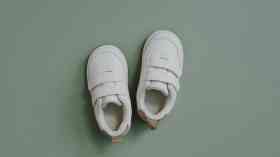
A spotlight on classroom air quality
The Covid-19 pandemic has brought the issue of indoor air quality into sharper focus, as ventilation and air purification have been shown to reduce the spread of the virus. We look at recent measures to improve the indoor air quality of education settings
Indoor air quality has received greater attention during the Covid-19 pandemic, as ventilation, fresh air and air purification have been shown to reduce the spread of the virus by removing air that contains virus particles. As such, the government has announced that education settings will be provided with carbon dioxide monitors from September. The new monitors will enable staff to act quickly where ventilation is poor and provide reassurance that existing ventilation measures are working.
The majority of c. 300,000 monitors will become available over the autumn term, with special schools and alternative provision prioritised to receive their full allocation from September given their higher-than-average numbers of vulnerable pupils.
CO2 monitors are portable so schools and other settings will be able to move them around to test their full estate, starting with areas they suspect may be poorly ventilated.
The programme will provide schools and other settings with sufficient monitors to take representative readings from across the indoor spaces in their estate, assessing all spaces in a relatively short space of time.
Schools and colleges are expected to receive at least partial allocations during the autumn term, enabling all settings to monitor areas where they believe airflow may be weakest. As the monitors are rolled out the Department for Education will provide guidance on their use.
Air purification trial
The government has also launched a trial of air purifiers in 30 schools in Bradford, which is designed to assess the technology in education settings and whether they could reduce the risk of transmission.
With the first results from the trial due before the end of the year, it could pave the way for a rollout of the technology across the country in 2022.
The research is being conducted by the Centre for Applied Education Research – a collaboration involving the universities of Leeds, Bradford and York, Bradford Council and the Department for Education.
Thirty primaries are involved in the randomised trial, with a third equipped with high-efficiency particulate air (HEPA) filters, a third with UV purifiers and the final ‘control’ group continuing without any special equipment.
In the schools with devices, the kit will be placed in any room that staff or children are spending substantial time in.
It is hoped the air purifiers and UV lights will also help reduce absence due to cold and flu infections, and improve the air quality for those with asthma and hay fever.
Healthier classrooms
The Welsh Government will be investing £2.58m for over 30,000 CO2 ‘traffic light’ monitors, for teaching and learning spaces such as classrooms, seminar rooms or lecture halls.
CO2 monitors include sensors which provide a visual signal of deteriorating internal air quality. The monitors will alert teachers and lecturers when CO2 levels rise, notifying them when air quality needs to improve, thereby aiding the control of ventilation during the winter. This will help maintain comfortable temperatures for learners and staff during colder periods, reduce heat loss and save on energy costs.
What’s more, £3.31m will be provided for new ozone disinfecting machines, to reduce cleaning times, improve disinfection and reduce costs. The funding is expected to supply more than 1,800 machines, at least one for every school, college and university in Wales.
The time and cost of cleaning rooms was identified as an issue for schools and colleges early in the pandemic. To address the issue, the Welsh Government asked Swansea University to establish an Ozone Classroom Decontamination Project, backed by Welsh Government funding. Scientists at the university have developed an Ozone disinfecting machine, now in production, which can be deployed for this task.
The machines can be used to quickly disinfect classrooms when clusters of Covid-19 or other communicable viruses are identified, such as norovirus.
Dr Chedly Tizaoui of Swansea University, part of the team who designed the ozone disinfection machine, said: “I am delighted that the ozone technology we developed at Swansea University will support efforts to eradicate Covid-19 in Wales. Reducing the spread of coronavirus in our educational institutions is vitally important, so our children and students can get back to the classroom.
“Ozone is potent against Covid-19 virus and due to its gaseous nature, it kills the virus whether be it airborne or adhered to a surface. Thanks to the support received from the Welsh Government and the Active Buildings pioneered by SPECIFIC, our research demonstrated that buildings can be Active on the inside and the ozone treatment developed here can be incorporated to support cleaning and disinfection of public buildings.”
Harmful pollutants
Data that was revealed on this year’s Clean Air Day revealed that over a quarter (27 per cent) of all UK schools are located in areas which are above World Health Organization (WHO) air pollution limits for the pollutant PM2.5 (10ug/m3).
The data collected by EarthSense is the most comprehensive and up-to-date sample of air pollution taken from all schools across the UK and is based on data input from a 2019 annual average data set. The data measures concentrations of PM2.5 (Particulate Matter with a diameter of 2.5 microns or less). PM2.5 is formed of tiny particles that can cross from the lungs into the blood and then move around the body causing conditions such as heart and lung disease.
The WHO Air Quality Guidelines (AQG) offer global guidance on thresholds and limits for key air pollutants that pose health risks. Of the 7,852 schools above the WHO PM2.5 limit of 10ug/m3, including nursery, primary, secondary and sixth forms, 98 per cent (7692) are in England.
In London, 25 per cent of schools (1973) are above the WHO PM2.5 limit - with notable boroughs including, 158 in Lambeth & Southwark, 146 in Romford, 129 in Croydon, 119 in Twickenham, 116 in Brixton, and 95 in Ilford.
Starting in the womb, toxic air can harm children’s health, causing or triggering asthma, damaging lung development, and as revealed on Clean Air Day 2020, it can even affect their ability to learn.
Schools and councils are encouraged to adopt measures to reduce pollution around schools. Measures include ‘no car zones’, no idling campaigns, and the promotion of active travel on the school run.
Schools are also encouraged to make use of “The Clean Air Schools Framework”, a free online tool that gives teachers, headteachers, parents and local authorities a bespoke blueprint of actions for tackling air pollution in and around the school.
Latest News
31/10/2025 - 10:12
A growing number of UK children are now eligible for Free School Meals (FSM), yet most still aren’t taking advantage of them on a daily basis, new research reveals.
30/10/2025 - 01:28
In the wake of the Raac crisis, the DfE spent £5 million on research into the condition of school buildings, which is due to conclude in spring 2026.
30/10/2025 - 01:09
Malmesbury Primary School in Wiltshire has submitted plans for a major expansion, funded by entrepreneur James Dyson.
30/10/2025 - 00:55
Monday's Every Pair Tells a Story campaign to protest to highlight the national crisis in SEND provision.
29/10/2025 - 09:19
Estimated data from the Department for Education reveals that 470,000 pupils under 16s use local authority funded transport to get to school.







